TRUTH AND MEMORY
British Art of the First World War
Truth and Memory: British Art of the First World War, a prestigious exhibition of more than sixty artworks executed by leading British artists during the war years, was shown at the York Art Gallery in 2016. It was derived from the Royal Academy’s monumental 1919 exhibition of 925 works entitled ‘The National War Paintings and Other Records’. Truth and Memory was first shown at the Imperial War Museum in 2014–15 as part of their centenary commemorations. The exhibition included outstanding works by Nash, Nevinson, Spencer and Roberts, among others. The images below are a small selection from the works exhibited at York.
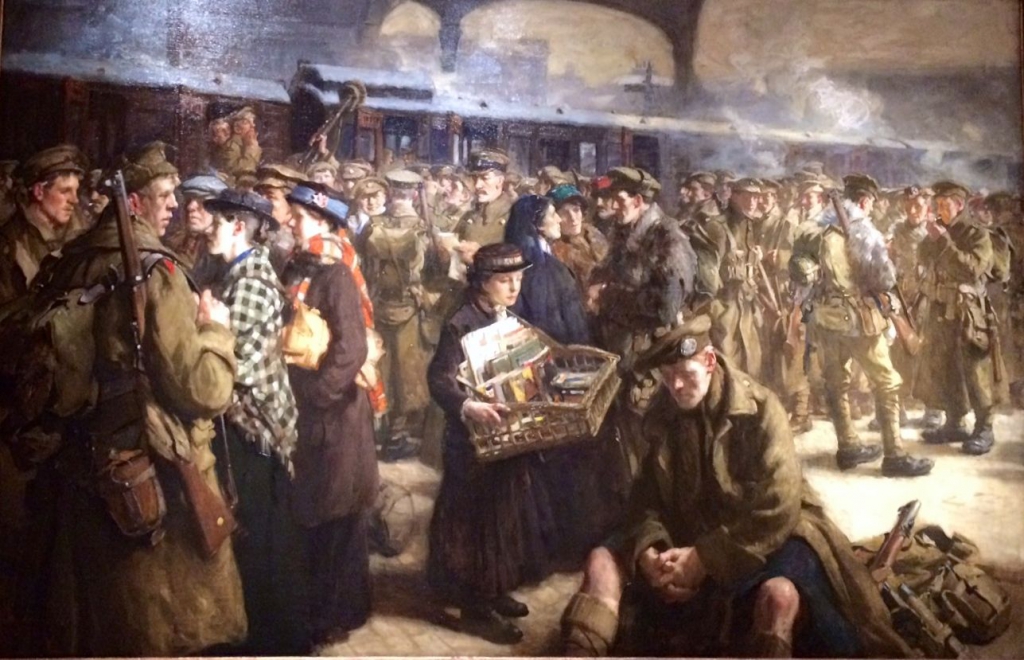
The Return to the Front: Victoria Railway Station (1916) by Robert Jack (1866–1952) YORAG 395, Gift of the Artist, 1928.
Richard Jack was a British artist who studied art in York. He was commissioned as a war artist in 1916 by the Canadian War Records Office following the positive reception of The Return to the Front.

The Old German Front Line, Arras, 1916 (1919) by Charles Sims (1873–1928). Art. IWM ART 128, Imperial War Museum
Charles Sims, British artist, was too old to fight in the war but visited the Western Front in October 1918 to find suitable material for a war painting. The German Army had withdrawn from their position at Arras, which became his subject matter for the painting above. His eldest son was killed in 1914.
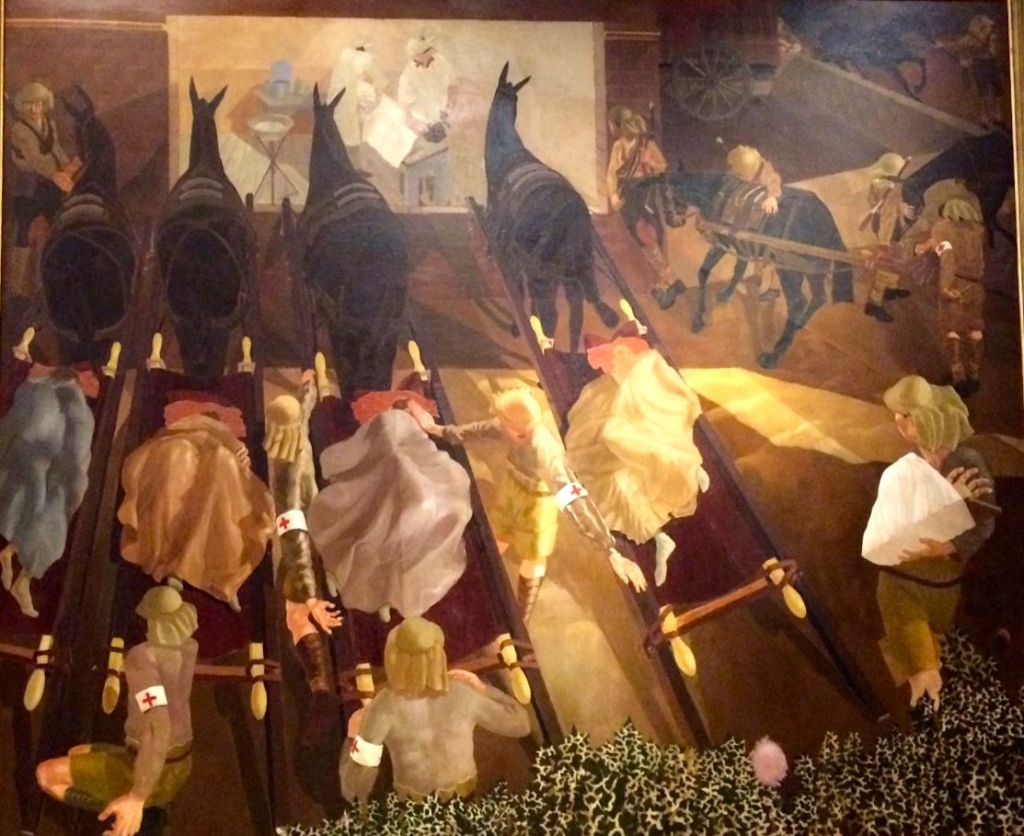
Travoys arriving with wounded at a Dressing Station at Smal, Macedonia, September 1916 by Stanley Spencer (1891–1959) Art.IWM ART 2268, Imperial War Museum.
Sir Stanley Spencer was a British painter who served with the R.A.M.C. 68th Field Ambulance unit in Macedonia from 1916. He later transferred to the Berkshire Regiment, also stationed in Macedonia. He said of this painting ‘I wanted it to be not a scene of horror but a scene of redemption’. He spent two and half years on the front line; his brother was killed in action in September 1918.
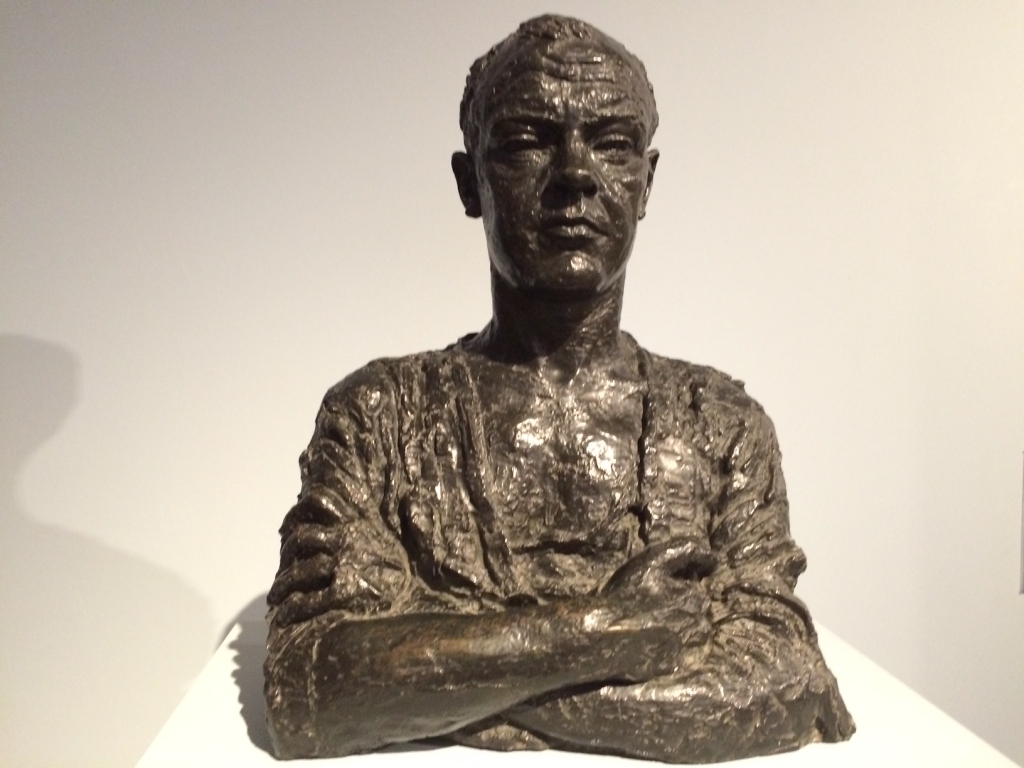
Sergeant D.F. Hunter V.C. 1/5 Highland Light Infantry (1919) by Jacob Epstein (1880–1959) Bronze IWM ART 2749 Imperial War Museum
Sir Jacob Epstein was a British sculptor. He was commissioned by war artist Sir Muirhead Bone, who was on the War Memorials Committee organising the 1919 Royal Academy exhibition, to produce a work which portrayed Sergeant David Ferguson Hunter (1891–1965) which would also serve as a memorial to all Scots awarded the V.C. Sergeant Hunter received his V.C. for holding an isolated position for over forty-eight hours at Moeuvres, France on 16/17th September 1918.
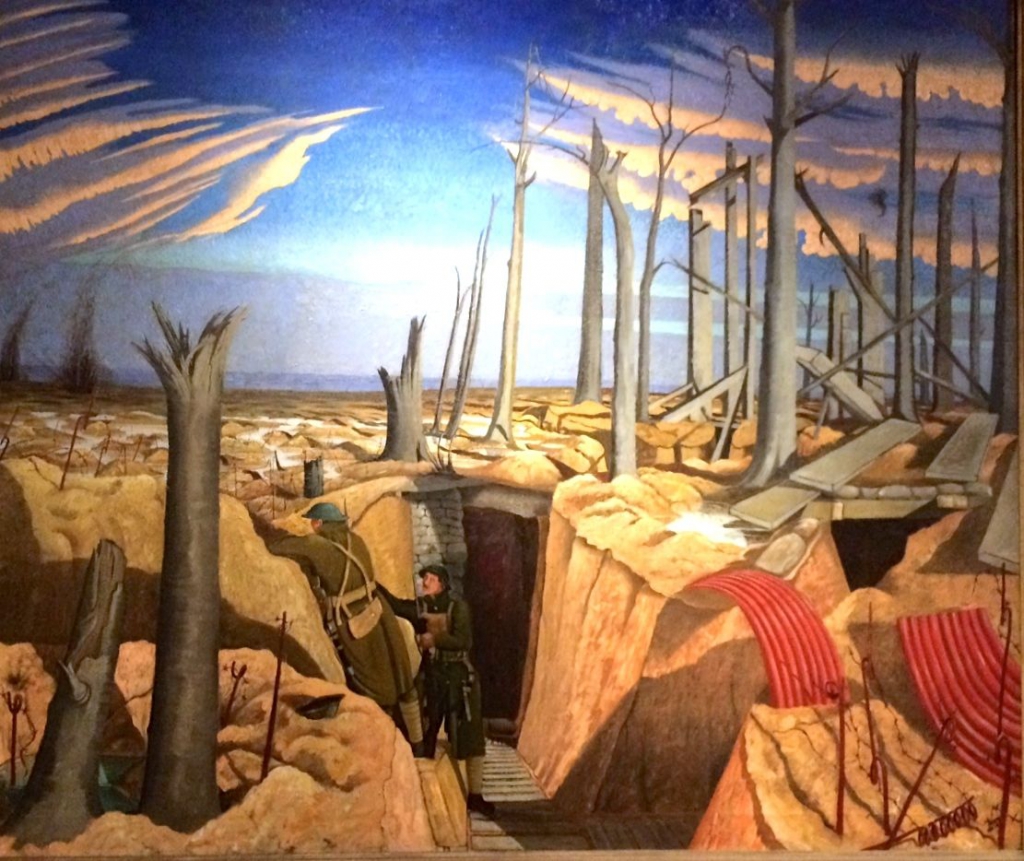
Oppy Wood 1917, Evening (1919) by John Nash. Art. IWM ART 2243, Imperial War Museum.
John Northcote Nash (1893–1977) was a British painter who served in the Artists Rifles from 1916–1918. He was posted to Oppy Wood shortly after arriving in France in November 1916 and said ‘I remember it was a very eerie place’.
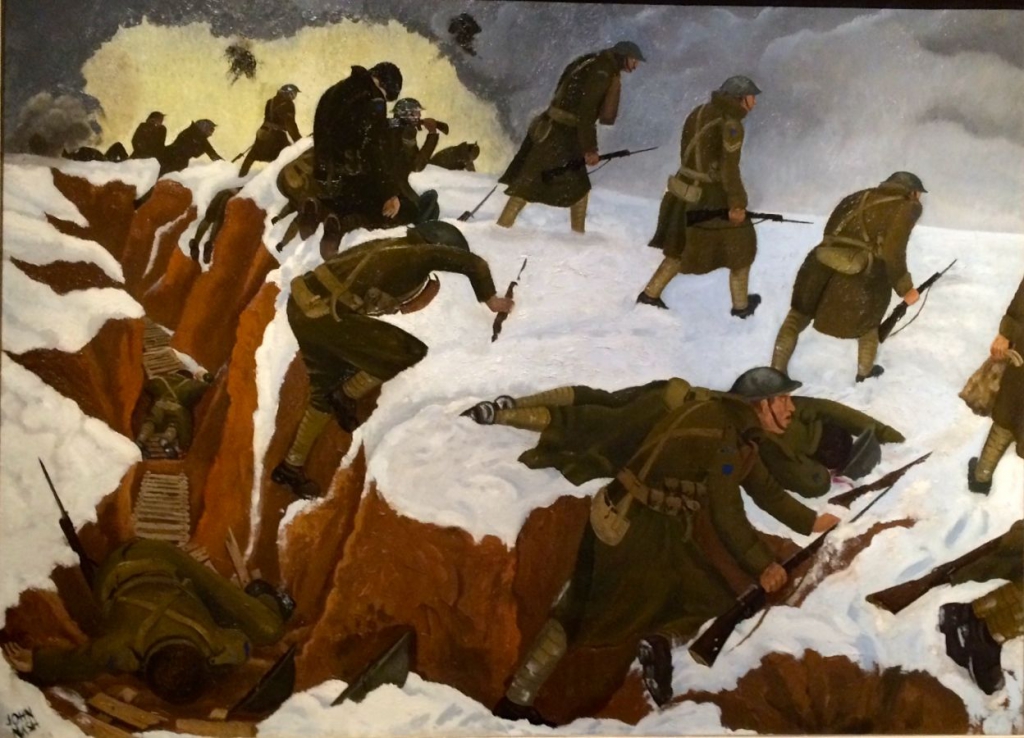
‘Over the Top’ 1st Artists Rifles at Marcoing 30th December 1917 by John Nash (1918) Art. IWM ART 1656 Imperial War Museum
‘Over the Top’ portrays the counter attack by the Artists Rifles at Welsh Ridge, Marcoing, France on 30th December 1917. Sixty-eight of the eighty men involved were killed or wounded in the first few minutes. John Nash, one of the twelve survivors, painted the picture shortly afterwards in 1918.
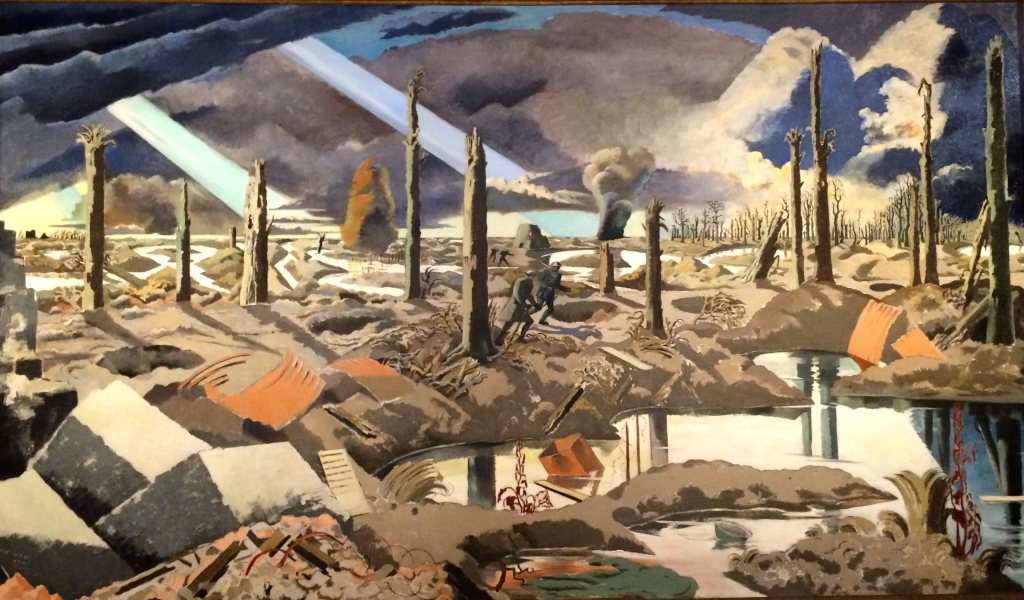
The Menin Road (1919) by Paul Nash. Art. IWM ART 2242.
Paul Nash (1889–1946), British surrealist painter, war artist and older brother of John Nash, also enlisted in the Artists Rifles and was sent as an officer to the western front in 1917. Three months later he was invalided back to London, returning to France in November 1917 as an official war artist. Commenting on the war on November 16th he wrote:
‘I have seen the most frightful nightmare of a country more conceived by Dante or Poe than by nature, unspeakably, utterly indescribable. In the fifteen drawings I have made I may give you some idea of its horror but only by being in it and of it can ever make you sensible of its dreadful nature and of what our men in France have to face … It is unspeakable, godless, hopeless. I am no longer an artist interested and curious. I am a messenger who will bring back word from the men who are fighting to those who want the war to go on for ever. Feeble, inarticulate, will be my message, but it will have a bitter truth, and may it burn their lousy souls.’ (quoted in Paul J.Gough (2010) A Terrible Beauty: British Artist in the First World War. Sanson & Company, Bristol.
Rosie Collins
